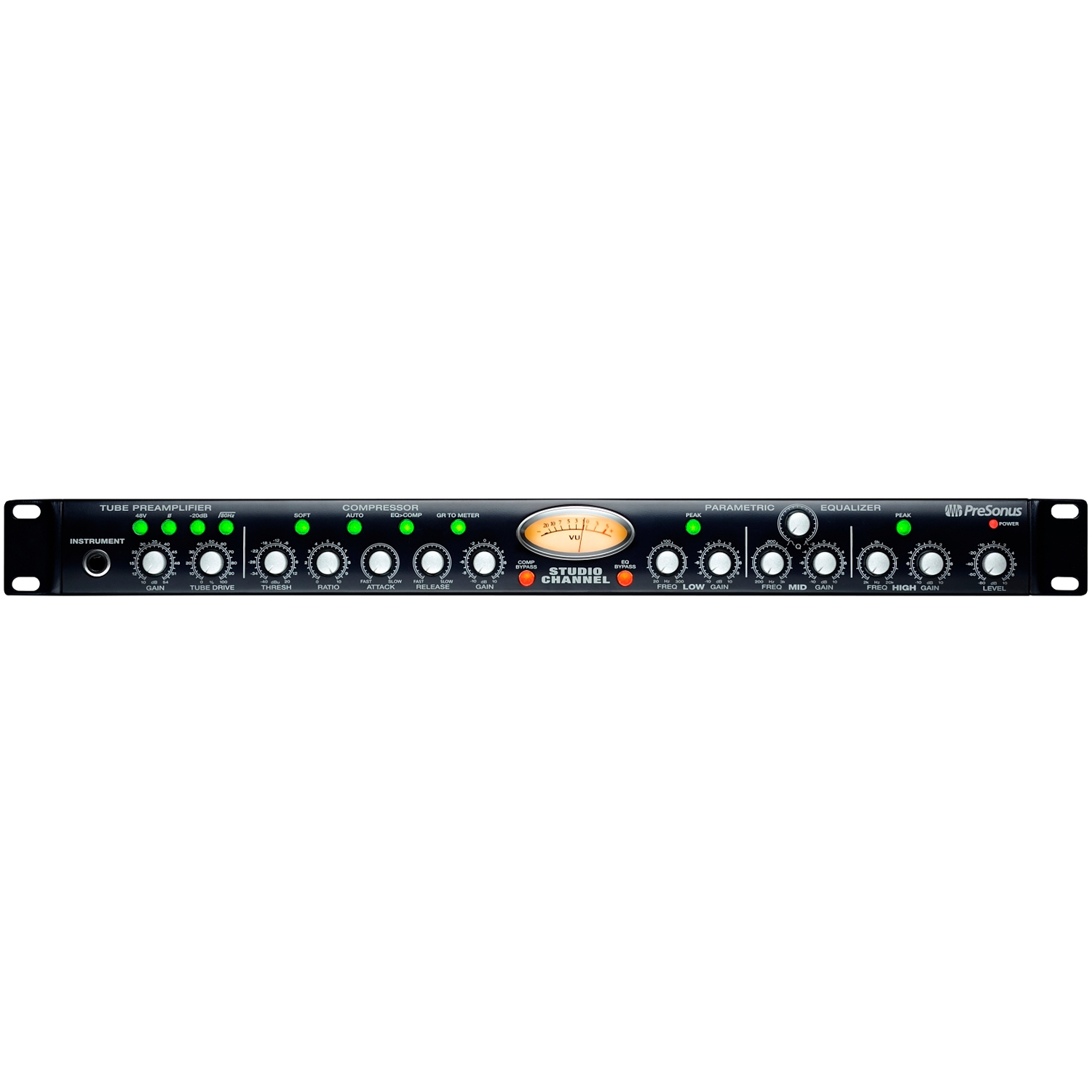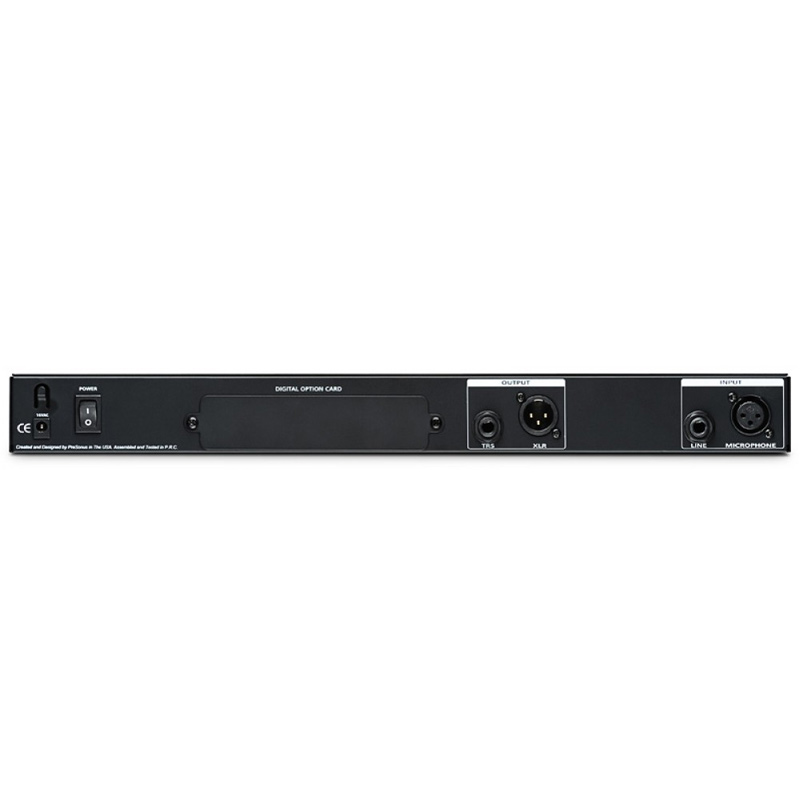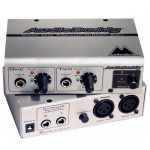PreSonus Studio Channel at a Glance:
- Enhance your signal path
- Class A tube preamplifier
- Fully featured VCA compressor
- 3-band parametric EQ
Enhance your signal path
The PreSonus Studio Channel is set to take your sound well into the next level, as it noticeably outperforms the preamplifiers built into most audio recording interfaces and affordable mixers. You get essential tube tone along with the ability to sculpt and shape it in whatever direction you want. Fatten up a vocal with compression or sweeten up a piano track with EQ, you’ll be ready to make the most out of whatever source you’re recording with this versatile audio toolbox.
Class A tube preamplifier
The Studio Channel has everything you need to achieve big, radio-worthy sound straightaway. The preamplifier stage of the Studio Channel is based on PreSonus’s award-winning BlueTube preamplifier that’s known for its high headroom and big tone, thanks to a high-output 12AX7 vacuum tube. What’s more, dual control Gain and Tube Drive let you dial in a wide range of sounds for sonic variety. You can give a DI-ed guitar track a bit of that overdriven tube edge then record a warm, smooth vocal track – it’s all onboard the Studio Channel.
Fully featured VCA compressor
The PreSonus Studio Channel’s compressor features a fully variable, ultra-fast and smooth VCA-based circuit. You have all the must-have compression controls at your fingertips, including ratio, threshold, attack, release, and gain make up. VCA-based compressors are known for both their musicality as well as their ability to tame even the fastest transients. Whatever source you’re recording, you’ll enjoy the ability to get the signal in as hot as needed without clipping.
3-band Parametric EQ
Use the Studio Channel’s superb equalizer section to carve out unwanted frequencies and tailor your tone to enhance your overall sound. The custom-designed amplifiers in the equalizer deliver sweet-sounding gain/cut so you can have ultra-smooth highs, deep solid lows, and clear midrange. What’s more, the mid-band of the EQ section has variable Q for controlling the width around the center point of the selected frequency. Plus, high and low frequency bands let you select peak/dip or shelving frequencies.










